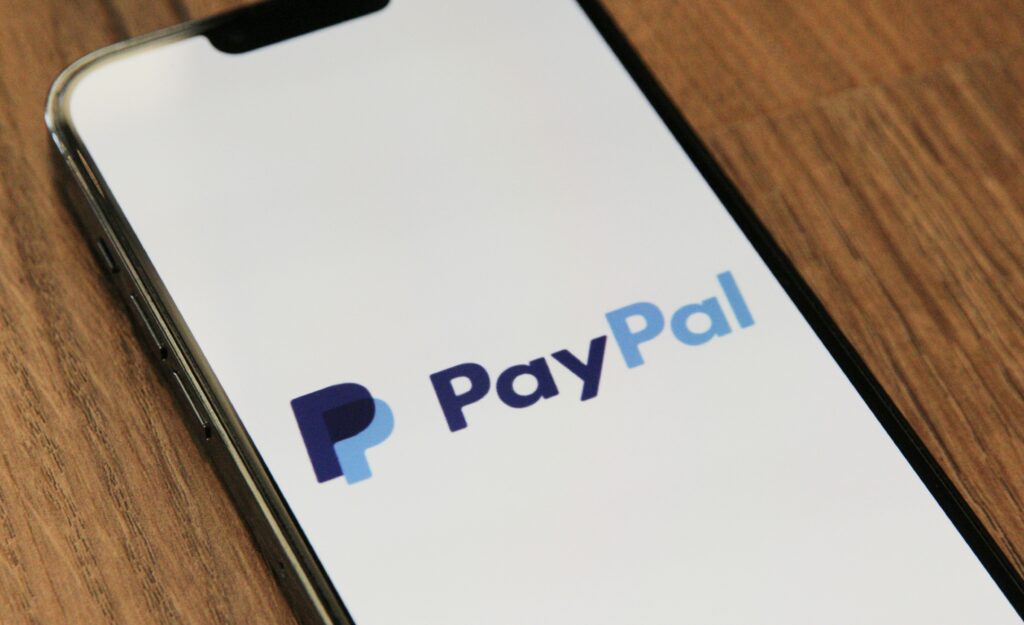As the digital economy continues to evolve, so too do the payment systems we rely on.
Stripe, a popular online payment aggregator founded in 2010, is facing an uncertain future with the emergence of Web3 technology. Could these new advances in internet connectivity spell the end for Stripe and similar services?
In this article, we will explore how Web3 technologies could potentially disrupt current payment processing solutions and examine what this might mean for service providers such as Stripe. We’ll also look at whether these challenges could lead to new opportunities that open up entirely different types of business models.
With an ever-growing customer base, any sudden changes in how people pay could ultimately determine which companies survive and which succumb to the changing landscape.
What Is Web3?
Web3, also known as Web 3.0 or the decentralized web (or even the 3rd-generation application layer), is a term used to describe an evolving set of protocols and technologies that are increasingly replacing existing internet-based services through decentralization.
Web3 is based on the blockchain technology used to create public distributed ledger networks such as Bitcoin (BTC) and Ethereum (ETH), empowering users to control their own data and make decisions about how it’s stored and secured. Users can now transact directly with each other by leveraging peer-to-peer networks for authentication, agreement, incentive structures, storage systems, and more. This evolution away from centralized intermediaries spares consumers from additional costs that stem from current Web 2.0 services.
Speaking in terms of the payments industry, it’s possible that the new wave of Web3 technologies will be so disruptive they render popular payment processors and gateways obsolete.
For example, crypto apps built on blockchain databases don’t require traditional payments companies anymore since these services do not need an intermediary in order for payment transactions to take place securely between two parties. This means end users won’t have any extra fees by using digital currencies instead of traditional fiat currencies when making purchases online through retail sites integrated with crypto wallets using smart contracts.
As a comparison, right now paying with crypto is usually a crypto-to-fiat conversion (unless it’s crypto wallet to crypto wallet).
But Web3 isn’t just about paying with crypto. It’s also about utilizing crypto technology, like the blockchain, with fiat currencies to make transactions faster and more secure.
How would Web3 disrupt payment aggregators like Stripe?
Web3 has the potential to drastically disrupt the payment gateway industry and its players. Stripe, a popular online payment platform, is at risk of becoming obsolete with this new advancement in internet connectivity on the rise.
The evolution of Web3 could provide users direct access to financial activities not just limited to payments but also investments, remittances, and other associated banking services without involving an intermediary or a third-party provider such as Stripe. For PayPal, and similar providers for both retailers and consumers, the disruption brought by Web3 could seriously impact their market share if these service providers are unable to effectively adapt their business aspect.
The emergence of blockchain and distributed ledger technologies may attempt to upend current industry dynamics. Merchants flock to Stripe because it’s simple, fast, and secure. But web3 provides simple, fast, and secure payment connections directly for all payment methods (debit, credit, crypto, etc.). So what would be the draw for new users to open a Stripe account?
Stripe provides their service at a cost that’s higher than a traditional merchant account. If merchants can get an equally simple user experience and speed as Stripe without the hassle Stripe brings later on down the road, there’s no reason they would open a Stripe account.
We’re not saying there will be a mass exodus from Stripe or similar services. Current Stripe users will likely continue using the service until they get burned.
Been burned by Stripe? We can help!
What are the potential opportunities for Stripe—or any payment processor—with web3?
Web3, or the decentralized internet, has introduced new technologies and protocols that have the potential to revolutionize the payment aggregation landscape. Here is a list of potential opportunities for payment aggregators in the Web3 ecosystem:
- Cross-chain payment aggregation: Facilitate seamless transactions across different blockchain networks, allowing users to pay with various cryptocurrencies or tokens without the need for manual conversion.
- Decentralized finance (DeFi) integration: Offer payment aggregation services for DeFi platforms, such as decentralized exchanges, lending and borrowing platforms, and yield farming pools, enabling users to interact with these platforms more easily.
- Non-fungible token (NFT) marketplaces: Provide payment aggregation services for NFT marketplaces, simplifying the purchase and sale of NFTs by supporting various cryptocurrencies and tokens.
- Digital identity and reputation systems: Partner with decentralized identity solutions to streamline Know Your Customer (KYC) and Anti-Money Laundering (AML) processes, reducing the friction for users while maintaining regulatory compliance.
- Decentralized autonomous organizations (DAOs) support: Offer payment aggregation services to DAOs, allowing them to collect and manage funds from their members or for specific projects in a decentralized manner.
- Layer 2 payment channels: Leverage layer 2 scaling solutions to offer faster, cheaper payment aggregation services for various cryptocurrencies and tokens.
- Subscription-based services: Implement web3-native subscription management solutions that allow users to pay for recurring services using cryptocurrencies or tokens.
- Decentralized e-commerce platforms: Provide payment aggregation services for decentralized e-commerce platforms, enabling users to pay for goods and services with various cryptocurrencies and tokens.
- Gaming and virtual worlds: Offer payment aggregation services for web3-based gaming platforms and virtual worlds (e.g., the metaverse), enabling users to purchase in-game items or access premium content using various cryptocurrencies and tokens.
- Privacy-preserving payment solutions: Integrate privacy-enhancing technologies like zero-knowledge proofs or confidential transactions to offer secure, private payment aggregation services for users in the web3 ecosystem.
By exploring these opportunities, payment aggregators can position themselves at the forefront of the web3 revolution, offering innovative solutions to users and businesses in the decentralized internet.
What are some web3 Stripe alternatives?
At the moment, web3 hasn’t arrived. Stripe works as you expect (though it’s not perfect). The fate of Stripe is the same as that of PayPal and Square: it’s up in the air for now.
What we can say for certain is opening a Stripe account, PayPal account, or Square account is rarely a good long-term solution for your business. To enter the web3 era with full support for your business from your payment processor and acquiring bank, you should work to open a full-fledged merchant account designed for your business.
Stripe, however, is a great short-term solution for your business. We expect that to continue to be true at the onset of web3 before other payment options emerge to take its place.
Merchant accounts are your best solution for web3 because they allow you to work with multiple payment processors. Stripe limits you to whatever Stripe decides is best for your transactions at the time (that’s the gist of how payment aggregators work), meaning you can’t pick and choose how something gets processed. With a merchant account, you can link your acquiring bank to many payment processors: a standard web2 credit card processor for now, and as soon as a web3 fintech option arises that appeals to you, you can link to it.
Merchant accounts also allow you to pick and choose which payment gateway you want to use, each of which comes with an SDK and API that’s customizable to your needs. We can only imagine the increased functionality of those resources with web3.
That’s how you future-proof your business.
The Bottom Line: Is Stripe Headed for Extinction?
As the Web3 revolution unfolds, traditional payment processors like Stripe may face existential challenges that could ultimately lead to their extinction. With the emergence of decentralized finance, cryptocurrencies, and blockchain technology, the payment landscape is rapidly changing.
Users are increasingly seeking decentralized alternatives that offer enhanced privacy, reduced fees, and greater financial sovereignty. In such a scenario, centralized payment processors like Stripe may struggle to keep up with the paradigm shift, as they are inherently reliant on the traditional financial infrastructure.
The extinction of Stripe as a payment processor could be driven by several factors.
- Firstly, the rise of decentralized payment solutions will likely enable users to transact directly with one another, bypassing the need for intermediaries like Stripe. These solutions can provide faster, more cost-effective, and censorship-resistant transactions, making them a preferred choice for many users and businesses.
- Secondly, the growing importance of cryptocurrencies and tokenized digital assets in the global economy will necessitate the adoption of payment processors that can seamlessly handle a wide range of digital currencies, which may push traditional payment processors to the sidelines.
- Lastly, the increasing demand for privacy-preserving technologies in the payment space will further challenge Stripe’s position, as the centralized nature of its services inherently makes it difficult to offer privacy guarantees.
In conclusion, the arrival of Web3 could signify the beginning of the end for traditional payment processors like Stripe. As decentralized finance and blockchain technology continue to reshape the payment landscape, users and businesses are likely to gravitate toward more innovative, decentralized solutions that offer greater flexibility, privacy, and cost-effectiveness.
While it remains to be seen how Stripe and other traditional payment processors will adapt to this rapidly changing environment, it is clear that their survival hinges on their ability to evolve, innovate, and embrace the opportunities presented by the Web3 ecosystem.







